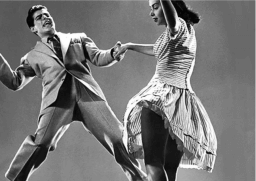World Dracula Day
World Dracula Day is observed next on Tuesday, May 26th, 2026 (311 days from today).

World Dracula Day is an annual celebration on May 26th of each year to celebrate and appreciate all the contributions Dracula to the cinema and literature, the most prominent of entertainment.
Of all the monsters known to man, which one can be considered more iconic than Count Dracula? The quintessential vampire, Count Dracula has inspired dozens of movies and stories around the world, not to mention his character's magical immortality during the beloved Halloween festival.
For all these reasons, there's no denying that this horror icon deserves more than his own little vacation so the world can show its appreciation for his contributions for the world of cinema and literature over the centuries. So put on your fangs, and let's get the tooth pulled right into this one, shall we?
No, you don't have to wait until Halloween to really celebrate this demonic figure because there's already a day dedicated to him. Though you might want to recap what he actually looked like in the popular 1992 movie Dracula, just to be sure.
History of World Dracula Day
Bram Stoker's Gothic horror novel Dracula was first published today in 1897, by Archibald Constable and Company in England. It sold for six shillings and was wrapped in yellow cloth with red lettering. It was firstly printed in the United States by Doubleday & McClure of New York City two years later. While not the first novel about vampires, it became a model for the genre, and laid the groundwork for future vampire stories, with the introduction of stripped of Dracula.
The novel was a success at the time, garnering rave reviews, but it became even more important to modern readers than it was to Victorian readers. At the time, it didn't make Bram Stoker be rich. However, today it has reached the legendary status and has inspired for many adaptations. Interestingly, it was the film adaptations from the early twentieth century that gave the novel more notoriety. Stage and television are its adaption.
The book follows an English lawyer named Jonathan Harker as he travels to Transylvania to meet Count Dracula at his castle, Castle Dracula. To Harker, Dracula looked pale and noticeably thinner. Dracula's weirdness became more apparent after he plunged into Harker's throat after Harker cut himself while shaving. Harker eventually discovers that Dracula is a vampire who needs to drink human blood to survive. Dracula then locks Harker in the castle and flees to England with 50 boxes of dirt (it is believed he needs dirt from his hometown to stay healthy). When Dracula went to England in search of new blood, Harker eventually escaped from the castle.
Meanwhile, Mina who is Harker's fiancée is coming to England to visit her friend named Lucy. One night, Mina discovers Lucy sleepwalking in a cemetery. Mina believes she saw a creature hovering over Lucy for a moment, and then noticed two red marks on Lucy's neck. Lucy became ill for the next few days and was then cared for by Dr. Seward and Dr. Abraham Van Helsing, before dying. Then strange reports began to emerge that a creature had attacked children in the area.
Jonathan Harker and Mina reunited and got married. Harker tells Dr. Helsing of his experience with Dracula, and Helsing later believes that Lucy contracted the vampire disease from him and was the one who attacked children. They dug up her body, cut off her head, staked her heart, and stuffed garlic into her mouth. They then turn their focus to Dracula and attempt to destroy his dirt boxes. He escaped back to Transylvania, where they found him buried in the last earthen box. They cut off his head and pierced his heart, knocking him to the ground.
Stoker spent years researching vampires before writing Dracula. During that time, he was particularly influenced by "Transylvanian Superstitions", an essay by Emily Gerard published in 1885. Stoker worked at the Lyceum Theater in London from 1878 to 1898. The theater was headed by Henry Irving, on whom Stoker based Dracula's usage. Stoker even hoped that Irving would play Dracula in a theatrical adaptation, but that didn't happen.
One theory is that Dracula is based on Vlad III, who is also known as the Vlad Impostor. Born in Transylvania in the 15th century, he is also known as Dráculea, which means "Son of Dracul." Indeed, his father was known as Dracul, a name derived from the knightly order to which he belonged — the Order of the Dragon (from the Latin draco for dragon). In modern Romanian, drac means "devil". It is believed that Stoker chose the name Dracula after learning this more modern translation. Some believe that the only connection between Vlad III and Dracula is their names, but some go even further. Vlad III was known for stabbing his enemies to death, and one unsubstantiated account states that he dipped bread in his victims' blood and ate it in front of them as they died on the stake.
Dracula has been interpreted in many ways. Some have interpreted this story as an allegory about the fear that Western Europeans feared Eastern Europeans coming to their area. Hence, the story of someone from Transylvania in Romania was originated from London and devastated its inhabitants. This theme appeared in other novels of the same period. Some see the book as a response to the patriarchal and conservative norms of the Victorian era, and as an exploration of repressed sexual desire. Some have also argued that the book is about the relationship between the past and the future, with Dracula representing a primordial past that challenges modernity.
The novel is often adapted. Stoker wrote the first theatrical adaptation, which debuted at the Lyceum Theater where he worked, before the novel even came out, on May 18, 1897. He continued to produce for the copyright for similar works in the future.
The silent film Nosferatu, directed by F.W. Murnau was released in 1922. The story of Dracula was slightly altered because Stoker's widow Florence did not allow an adaptation of the story. For example, it was set in Germany in 1830 instead of London in 1890, and the names of some characters were changed. Stoker's widow still would like the film to be removed out of circulation, and therefore, Stoker's estate sued. They won, but the film later made it to the United States, where Dracula was already in the public domain (Stoker had previously disobeyed some US copyright laws). Ironically, it was this movie that helped the book to begin to gain popularity.
Shortly after the release of Nosferatu, Florence Stoker licensed Dracula for a stage adaptation. It made its debut in 1924 in the United Kingdom and toured domestically for three years, and then went on to show again in London. In 1927, the British version was slightly edited and made its way to America. Bela Lugosi plays Dracula while Edward van Sloan plays Van Helsing. Lugosi and van Sloan reprized their roles in a successful Universal Studios film in 1931. The character Dracula went on to appear in many Universal Studios films during the 1930s and 1940s.
In 1958, the film Dracula was released in the UK as Horror of Dracula in the United States. Christopher Lee plays Dracula and Peter Cushing as Van Helsing. Both reprized their roles in subsequent films decades later. The BBC produced a TV series called Count Dracula in 1977. That same year, the 1924 play was revived. In 1979, Dracula starring Frank Langella was released, that was considered as Werner Herzog's Nosferatu remake, Nosferatu the Vampyre. In 1992, Gary Oldman played Dracula in Francis Ford Coppola's Bram Stoker's Dracula. The character Dracula has appeared in over 200 films, many times in stories unrelated to the original Dracula. Today, we celebrate both the original novel and its adaptations.
How to celebrate World Dracula Day
Celebrate all the things Dracula why not throw a party and invite your friends over to enjoy exciting movies. Ideas for creating the perfect atmosphere include giving your party a gothic feel by making sure all your decorations are black or blood red, the table setting is quite sophisticated, Everyone dresses up in fancy clothes and wears fangs, hangs lots of bats and cobwebs decorations, and serves a variety of drinks that are as red as blood.
It would also be perfect if you watch one or more classic vampire movies that have been made, such as the 1958 British classic simply titled "Dracula", and starring Christopher Lee's family is extremely impressive in the role of aristocratic character. Other film choices include “Nosferatu,” a 1922 German expressionist horror film, and “Interview with the Vampire” starring young Tom Cruise, Brad Pitt, and Kirsten Dunst. And if that's something more exciting you're looking for, Roman Polański's "Fearless Vampire Slayers or Pardon Me, But Your Teeth Are in My Neck" will keep everyone entertained.
You should spend some time planning to visit all the places that Dracula visited during his travels, including Budapest, England and Eastern Europe, where you can find traces and feel his presence in many monuments scattered all over Europe! If you want to keep things a little closer to home, then why not throw a Dracula-themed birthday party. The better way to throw a surprise birthday party than to have a bunch of Dracula-themed monsters is to jump out from behind the couch. Maybe give that ticket to old aunt Mavis; you won't want her to have a heart attack on her 90th birthday!
If you're not planning on throwing a Halloween party, that doesn't mean you have to Miss Dracula Day — take the time to explore the world created by Bran Stoker in his popular novel. Reading a good book has never hurt anyone, and in an age of 140-character slurred text on social media, it's more important than ever to keep the literary art alive. If you've read it, consider checking out Anne Rice's "Chronicles of Vampires," a critically acclaimed series of 11 books about influential vampires throughout history. "Salem's Lot" by Stephen King, as you can see, there is no shortage of ways to celebrate Vampire Day in this world!
Observed
World Dracula Day has been observed annually on May 26th.Dates
Sunday, May 26th, 2024
Monday, May 26th, 2025
Tuesday, May 26th, 2026
Wednesday, May 26th, 2027
Friday, May 26th, 2028


